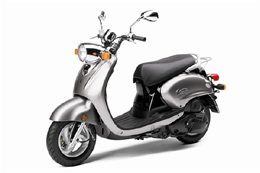 It’s been six months or so since I received the Sony PRS 505 E-Reader from my last employer as a generous going away present, and I forgot that I hadn’t posted my thoughts on the device yet. After six months, I can safely say I’ve been relatively pleased with the device.
It’s been six months or so since I received the Sony PRS 505 E-Reader from my last employer as a generous going away present, and I forgot that I hadn’t posted my thoughts on the device yet. After six months, I can safely say I’ve been relatively pleased with the device.
For those that haven’t seen or played with the device, the Sony PRS 505 is an electronic book, one of the first commercial application of “electronic ink”, a passive display technology from E Ink Corporation. Unlike a traditional LCD screen, such as those in laptops and computer monitors, electronic ink is a passive diaply technology. It uses no power to display the image, and does not feature a backlight to illuminate the screen. Instead, the display uses reflected light just like a regular book. The result is a remarkably crisp display that is easy on the eyes, and uses miniscule amounts of power to “turn the page”.
At first, I was a bit sceptical about the Sony device. When it first appeared, the device was well over $300 and was a bit bulky. The PRS 505 is the second generation of the device, and features a slimmer design and similarly slimmer cost (on the order of $280). Yet despite the lower price, I’m not sure I would have bought this device on my own; it was something I wanted, but not so badly that I was about to lay out cash for it.
In retrospect, that was a mistake that I’m grateful was corrected when I received the device as a gift.
The device itself is on par with the weight of a medium-sized hardback book. The battery is only required when turning the page, a feature which easily allows the user to read a handful of books between recharges. The ergonomic design of the device is quite clever – the circular button at the bottom left moves the book between pages, and sits naturally under the thumb when resting the book in your hand with the cover (not shown) held open by your thumb. Similarly, the two navigation buttons on the right side mimic the place where you might normally place your thumb when flipping through a normal paperback book.
Reading is fairly natural, although the time the screen takes to change between “pages” is noticeable and can sometimes interrupt the action on the page. You can scale up the text, a feature that’s sure to be appreciated by older readers with failing eyesite – in fact, this device may eventually find a good following with older readers for this feature alone (doubly true if you believe Steve Jobs’ assertion that nobody reads anymore really just applies to the Millennials).
The one major failing of the device, sadly, is Sony’s eBook Store and the associates client software used to purchase books from the store and place them on the device. Sony’s software is notoriously poor (I speak from experience), and the PRS 505 client software is no expection. It’s slow to load the application, slow to access the store, offers incomprehensible representations of what books are on the device currently versus what books are on your computer locally, and takes an inexplicable amount of time to move a book onto the device. In the end, I’ve found it easier and faster to simply download the electronic books from the store to my hard drive, mount the device as a USB drive, and copy the files over myself manually.
That said, the selection of the store is pretty decent. Besides the latest best-sellers, there’s a fairly extension library of the classics. When I received the device, I also received a voucher for $50 worth of electronic books, plus 100 credits to use on purchasing any of the Sony Classics (likely pulled down from Project Gutenberg). I have yet to purchase any more books beyond these amounts (still working my way through the pile).
The device also handles text, RTF, and PDF files, allowing you to use the device to read any existing documents you may in those formats. In reality, the rendering of these formats on the device leaves something to be desired: page breaks are often inconsistent, rendering the reading experience somewhat degraded. There are, however, many freely available resources for downloading appropriately formatted versions of Project Gutenberg books, such as manybooks.net.
Many will wonder how this device compares to the Amazon Kindle device, which I was lucky enough to try out while in California (one of my friends at work bought one). The devices uses the same screen technology as the Sony PRS 505, and shares many similarities. The two major feature differences are the industrial design of the Kindle, which I found to be far less elegant than the Sony device, and the wireless capabilities of the Kindle. The Kindle features a built-in wireless modem that allows the user to download books from Amazon.com directly. There is no cost for this feature, as this device effectively enables Amazon.com to sell books anywhere. The Kindle is a fair bit more expensive, however, costing about $350.
Overall, I’m pretty pleased with the Sony device and continue to use it. It’s especially useful when I’m travelling to tote a couple books in my backpack without crippling myself. However, at $280 the device is still too expensive for most users, in my opinion. This device is something to stick on the Christmas or birthday list and hope someone’s feeling generous.

 Since returning to Vancouver in January, I’ve noticed a change in the types of vehicles on the road. The automobile landscape in Vancouver has expanded to include two new vehicles:
Since returning to Vancouver in January, I’ve noticed a change in the types of vehicles on the road. The automobile landscape in Vancouver has expanded to include two new vehicles: